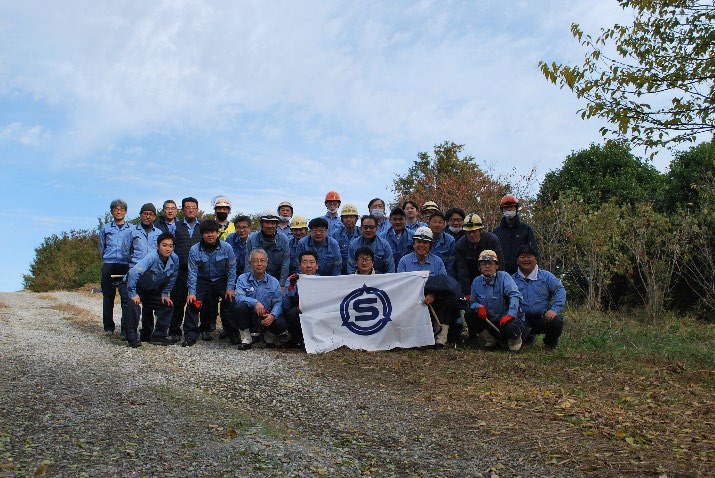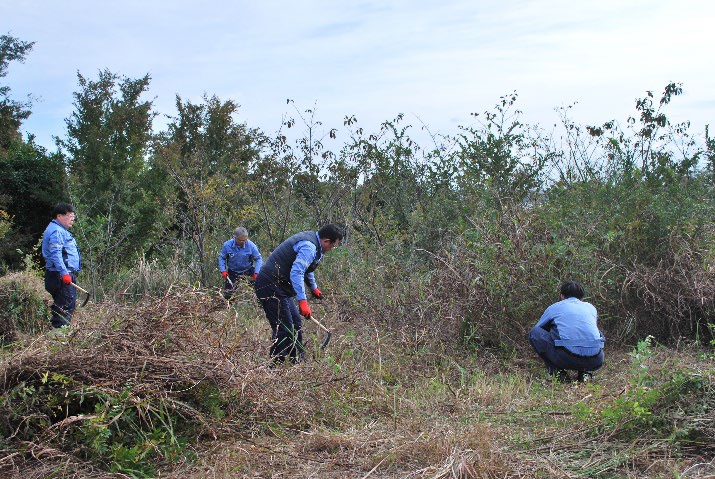Environmental policy
Environmental philosophy
The Osaka Steel Group contributes to society by actively working to reduce environmental impacts and preserve the global environment through our business activities of recycling steel scrap into steel products.
Basic policy
Achieving Carbon Neutrality
The Osaka Steel Group is committed to cutting CO₂ emissions by 46% from fiscal 2013 levels by fiscal 2030, with a vision to achieve carbon neutrality by fiscal 2050.

(1)Introduction of energy-efficient equipment
(2)Reduction of CO₂ emissions through the use of renewable energy
(3)Use of CO₂ capture, absorption, and storage technology and utilization of carbon offsetting
The Group’s energy conservation initiatives
(1)CO2 emissions
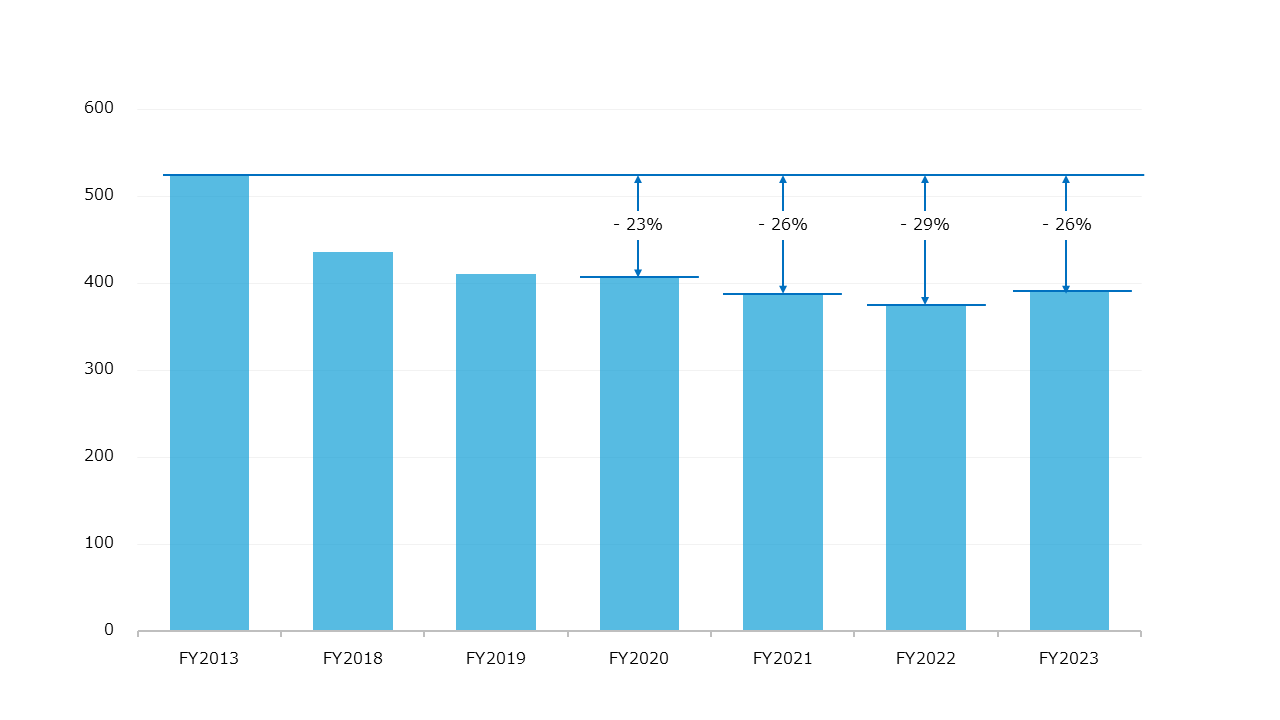
(Unit: 1,000 tons CO2)
(2)Energy consumption
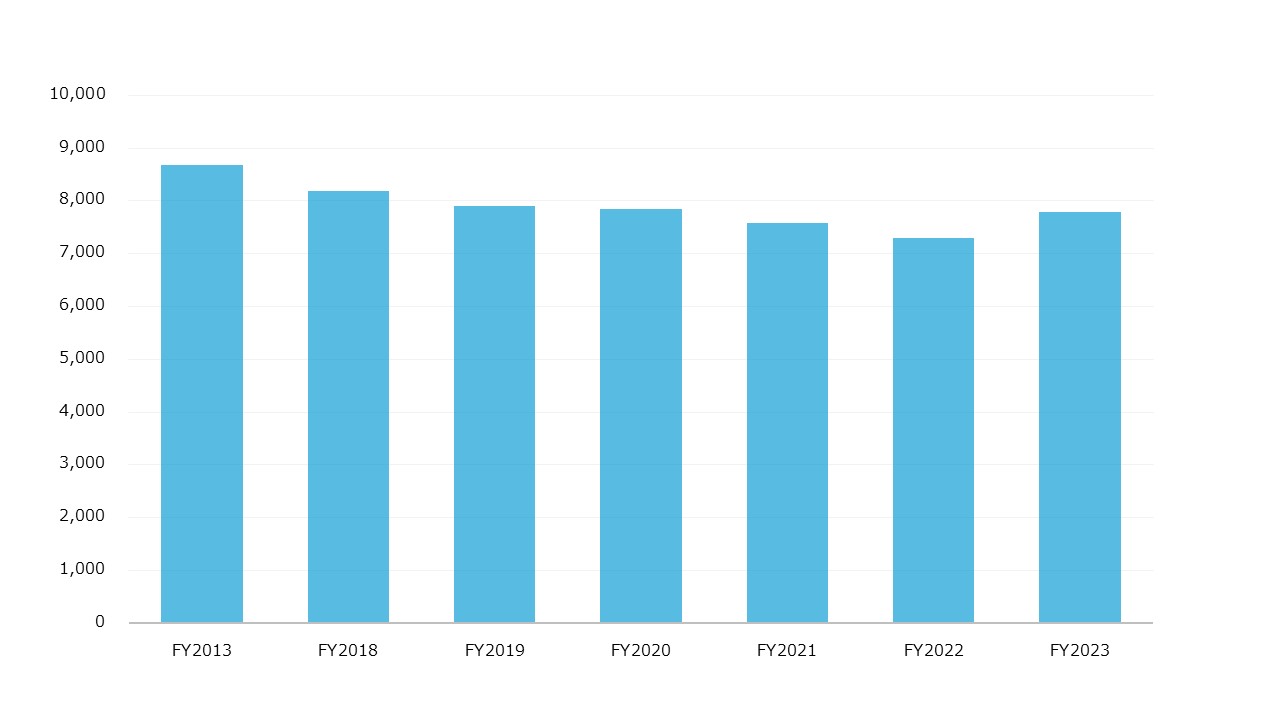
(Unit: TJ)
Information Disclosure based on the TCFD (Task Force on Climate-related Financial Disclosures) Recommendations
The Osaka Steel Group assesses potential climate change impacts on its business operations, implementing measures to manage risks appropriately through adaptation while pursuing business opportunities.
Governance
We have established a Sustainability Committee chaired by our Representative Director and President, with members appointed by the chair. This committee identifies materiality, including climate-related matters, and deliberates sustainability strategies, regularly reporting to the Corporate Policy Committee and Board of Directors.
The Corporate Policy Committee and Board of Directors oversee risk management by reviewing regular reports on progress and target achievement from the Sustainability Committee.
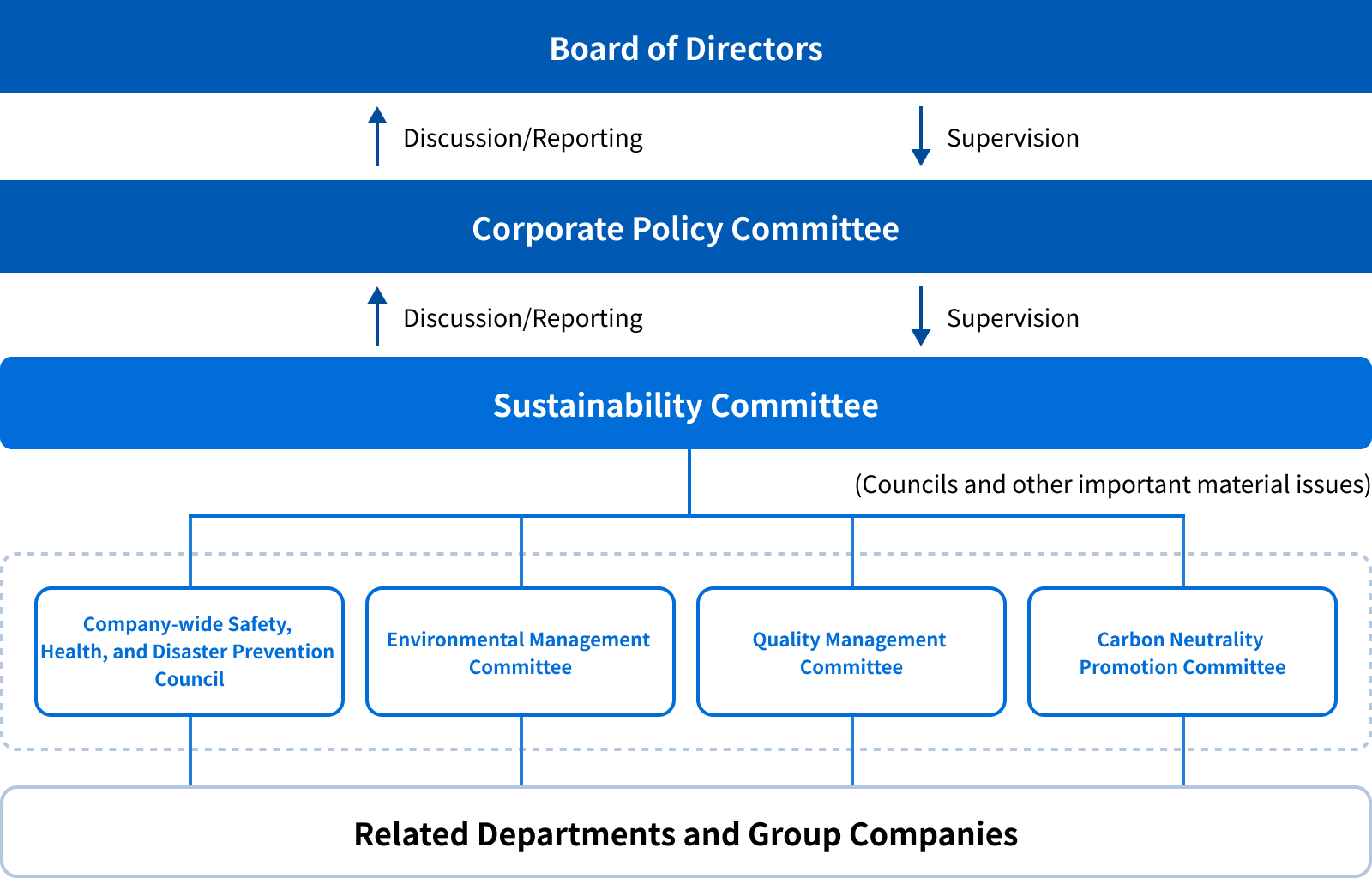
Strategy
The Osaka Steel Group utilizes scenario analysis to assess climate change impacts on its business, implementing measures to manage risks appropriately while pursuing business opportunities.
The 1.5°C and 4°C scenario outlooks and main reference reports used in our analysis are detailed below.

Notes:
IPCC: Intergovernmental Panel on Climate Change
IEA: International Energy Agency

(Note) Timeframe:
Short-term: Up to 3 years Medium-term: 4–6 years Long-term: 7+ years
(Note) Impact Scale:
Risk Management
Our Carbon Neutrality Promotion Committee identifies and evaluates climate-related risks and management issues, developing policies to minimize risks and seize opportunities, which are reported to the Sustainability Committee. The Sustainability Committee consolidates these with other sustainability matters and directs response measures to internal departments and Group companies. It also reviews the progress of response measures and achievement of targets, reporting regularly to the Board of Directors.
Metrics and Targets
We use greenhouse gas (GHG) emissions as our key metric for climate change initiatives. Our GHG emission performance is shown below. Scope 3 emissions (other indirect emissions beyond Scope 1 and Scope 2) are currently being calculated.

Notes:
1: Calculated for energy and carbon material-derived CO2 at manufacturing sites in Japan
2: Using a Ministry of the Environment database
3: Using adjusted emission factors (FY2023 confirmed values)
We have established a GHG reduction goal to decrease Scope 1+2 emissions by 46% from 2013 levels by 2030.
Progress toward last year’s target stands at 31%.
Contribution through the recycling of iron resources
Iron is an important material that is indispensable to today’s society. Excellent in terms of cost and production, it also supports our lives in various ways. At the end of its use, steel is sorted and captured as scrap. After scrap is melted and recycled in an electric arc furnace (EAF), recycled steel is sent back to our society. Osaka Steel is an EAF steelmaker, and EAF steelmakers engaged in the recycling of iron using this CO2-free ironmaking process are gaining importance. Osaka Steel will contribute to the creation of a sustainable society through the very business of iron resource recycling.
Promotion of internal zero emission
Steel slags, dust, and other byproducts are generated in the ironmaking process, and in FY2022, some 90,000 tons of byproducts were generated when we produced about 800,000 tons of crude steel. Osaka Steel strives to reduce byproducts mainly by recycling most of them both internally and externally, and maintains a high recycling rate currently at approximately 90% or more. We will continue to promote efforts to achieve internal zero emission.
Acquisition of SuMPO EPD (formerly EcoLeaf) Environmental Label
The Osaka Steel Group has acquired the environmental label “SuMPO EPD※(formerly EcoLeaf)”, which is registered and published by the Sustainable Management Promotion Organization (SuMPO), for six products including Equal angles and other steel products. SuMPO EPD is one of the Environmental Product Declaration (EPD) certification programs compliant with ISO 14025 that aim to disclose environmental information on the entire life cycle of products (from resource extraction, manufacturing, and distribution to usage, disposal, and recycling) in quantitative terms using the life cycle assessment (LCA) method. This enables customers to use the label as evidence for judging when quantitatively and objectively evaluating the environmental impacts of products they use and purchasing environmentally conscious products.
If customers use a certain amount or more of products with a SuMPO EPD Environmental Label for their buildings, they can obtain additional points when applying for an LEED certification (America’s international performance evaluation system aimed at assessing the environment of buildings and cities). We expect to contribute greatly to customers who strive to acquire an LEED certification.

The details of this EPD are available on the website of the Sustainable Management Promotion Organization (SuMPO)
Acquisition of SIRIM ECO-LABELLING CERTIFICATION
We have obtained SIRIM ECO-LABELLING CERTIFICATION from SIRIM QAS International, Malaysia’s leading testing, inspection and certification body, for two of our products, Equal angles and Channels.
Furthermore, PT.KRAKATAU OSAKA STEEL, a subsidiary, has also obtained the certification for Equal
This label which is Malaysia’s official national Type I environmental label (based on ISO 14024) gives the products a competitive edge over similar products in a market that is becoming environmental priority. Certified green products and services are adopted for green procurement by government and private sector, green incentives such as green investment tax credits and green income tax exemptions, and related green technology initiatives.
In addition, we are the first company among integrated steelworks outside of Malaysia to receive this label.

Participation in the “Kyosei-no-Mori (Symbiotic Forest) Creation Project”
As part of our commitment to the SDGs and social initiatives related to environmental conservation, Osaka Steel has joined the “Sakai 7-3 District Kyosei-no-Mori (Symbiotic Forest) Creation Project,” which is promoted by Osaka Prefecture. We signed an agreement with the prefecture in September 2024.
The “Sakai 7-3 District Kyosei-no-Mori (Symbiotic Forest) Creation Project” aims to create natural environments and enhance biodiversity by developing forested and biotope spaces across approximately 100 hectares of the Sakai 7-3 District, a former industrial waste disposal site in Sakai City, Osaka Prefecture. Osaka Steel has named its designated area “Osaka Steel Sakai Forest” and is actively engaged in this initiative.
We will keep promoting environmental and biodiversity conservation while collaborating with society to achieve a sustainable future.
